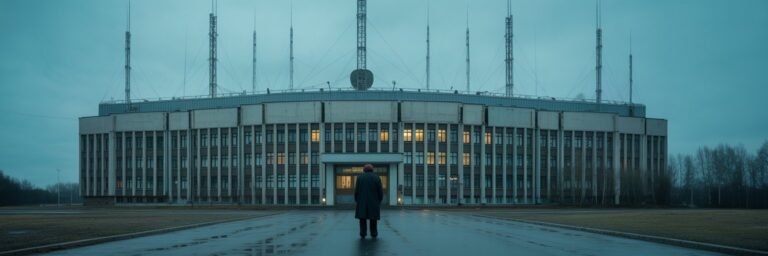INTRODUCTION
Buried in the annals of the 20th century, spanning over four decades and sweeping across over 100 countries, the Cold War was an epochal clash of ideologies – underpinned by an arms race and nuclear proliferation between two superpowers, the United States and the USSR. Holding the world stage from 1945 until 1991, the Cold War encompassed a range of social, political, and economic tensions that divided the globe into the East and the West. However, like all great epochs, it eventually gave way. But what factors led to its undoing? Within its cacophony of theories, controversies, and reinterpretations lies the ever-fascinating narrative of its collapse.
HISTORICAL BACKGROUND
Emerging in the aftermath of World War II, the basis of the Cold War lay in disagreements between the democratic West led by the United States and communist East led by the Soviet Union. The contours of the conflict spread worldwide, steeped in the element of Mutually Assured Destruction in case of a direct hazarding war. The geopolitical game played out in myriad “proxy wars”, space exploration, economic sanctions, and diplomatic stalemates.
What catalyzed the end of the Cold War? Many attribute it to a combination of economics, military, ideology, and technology, combined with the internal and external pressures exerted on the crumbling Soviet Union. Incorporating these often paradoxical narratives into a coherent frame provides a lucid understanding of the Cold War’s unraveling.
THEORIES AND INTERPRETATIONS
Typically, historians interpret the Cold War’s end under two main theories – “realist” and “idealist”. In the realist view, the unyielding economic decline and political instability within the Soviet Union, combined with the vigorous arms race imposed by U.S President Reagan, threaded the downfall of the USSR. The unsustainable military expenditure, coupled with the inherent unproductivity of the socialist domestic economy, broke the Soviet backbone.
The idealist theory, however, illuminates the power of present ideas, diplomatic events, and individual key figures. Soviet leader Mikhail Gorbachev’s initiatives of glasnost (openness) and perestroika (restructuring) significantly altered the Soviet Union’s foundation. His radical transparency approach weakened the totalitarian grip the state experienced over its citizens. Furthermore, his diplomatic prowess, especially his allocution in reducing arms at the United Nations General Assembly in 1988, lessened international tensions.
MYSTERIES AND CONTROVERSIES
The definitive reasons surrounding the Cold War’s collapse remain shrouded in diverse interpretations and controversies. Many assert the economic angle overshadows important ideological factors. Additionally, dissenting historians argue that portraying the U.S as the “winner” reinforces inherent Western biases, overlooking the peaceful means by which the Soviet Union dismantled its empire.
Another mystery within these narratives is the suddenness of the USSR’s demise. For an empire that stood strong across seven decades, its swift collapse within three years (1989-1991) remains an enigma. Was it the sudden failure of a hitherto strong political system or a cumulative aftershock of internal dynamics and the demand for political autonomy by its republics?
SYMBOLISM AND CULTURAL SIGNIFICANCE
The fall of the Berlin Wall in 1989 – the literal dismantling of a vast ideological barrier, stands as a prominent symbol of the Cold War’s end. This reunification of East and West Germany under the banner of democracy was symbolic of the larger global wave towards democratization. Similarly, the schismatic division seen in Korea, the space race, and the Cuban Missile Crisis, also serve as cultural reference points.
The Cold War had significant ramifications for art, cinema, literature, and pop-culture, creating a lasting cultural impression in the peoples’ consciousness. The era not only perpetuated an image of the “other” but also invoked a dichotomy of freedom vs. control, individual vs. state, capitalist valor vs. socialist ideal, thereby shaping cultural perceptions.
MODERN INVESTIGATIONS
Modern scholarly investigations continue to analyze the multiplicity of factors contributing to the Cold War’s disintegration. Breaking away from the conventional piquancy of national archives, sociologists and political anthropologists are delving into oral histories, personal narratives, literature, and cinema to understand people’s lived experiences during the era.
Using these sources, academics reveal the intricate fabric of societies influenced by soft power – propaganda, media, literature, and cultural exchange programs. These work in conjunction with more traditional methods like quantitative data examination to provide a more comprehensive view of the dynamics leading up to the end of the Cold War.
LEGACY AND CONCLUSION
The legacy of the Cold War reverberates in our modern world. It laid the groundwork for the U.S’s preeminence as the global power. It shifted the political geometry worldwide, leading to geopolitical realignments and the rise of the global south.
The collapse of the Cold War initiated a global wave of democratization, marked the grave of the socialist economic model, and reaffirmed the prowess of the capitalist market economy. The end was also synonymous with the emergence of a new range of conflicts, grapples with nationhood, and democratic surpluses.
In examining the causes leading to the Cold War’s end, one must ponder over the intertwined domains contributing to its demise. The duality of power and principles, hard realities, and ideal pursuits, the economic calculus, and ideological dogmas, when viewed in harmony, offer us an inclusive understanding of this historic event.
The Cold War era, its collapse, and the subsequent birth of a new world order underline the incessant dynamism of history – its ability to oscillate and shift the contours of power and leadership. As we delve into and scrutinize this transformative period, we are reminded of the formidable forces of history, the intricate interplay of ideologies, and the unerring capacity of humanity to scale heights, endure crises and rise anew.






